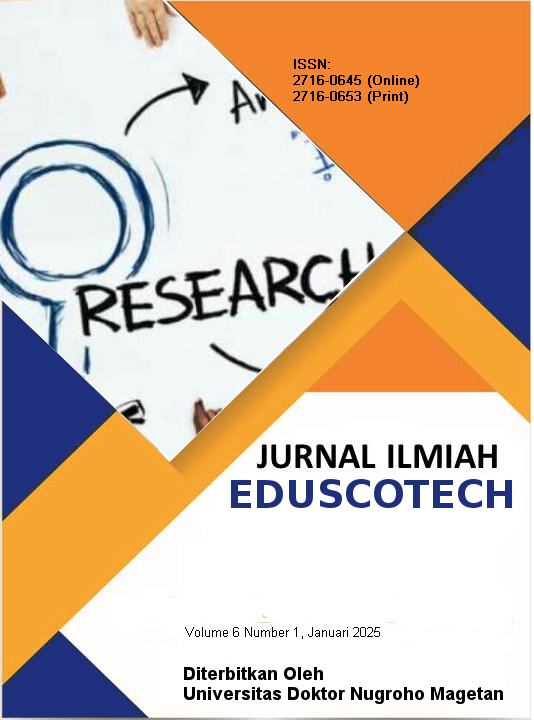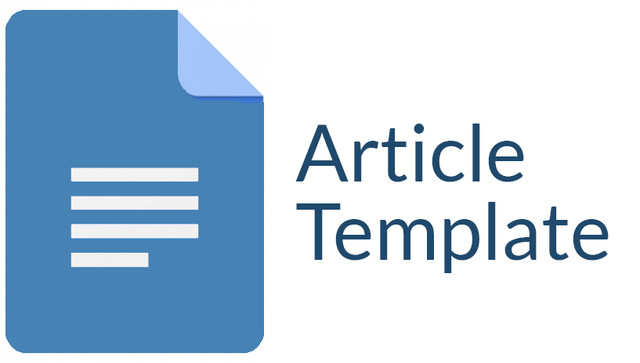Peran Seni dalam Pengembangan Kreativitas Anak Usia Dini Di TK Angkasa Maospati
Keywords:
Arts Creativity, Early Childhood, Cognitive Development, Emotional DevelopmentAbstract
Early childhood education (ECE) plays a pivotal role in laying the foundation for a child’s overall development, encompassing cognitive, social, emotional, and motor skills. One of the key aspects of ECE is fostering creativity, which can be effectively nurtured through various forms of art such as music, painting, and dance. Creativity in early childhood is essential for the development of problem-solving abilities, critical thinking, and emotional intelligence. This study aims to explore the role of arts in enhancing creativity among young children at TK Angkasa Maospati, a preschool in Maospati. The research investigates how art activities such as music, painting, and dance are integrated into the curriculum and their impact on children's cognitive, emotional, and social development.The study adopts a qualitative approach, utilizing observation and interviews as data collection methods. Observations were conducted during art-related activities, and interviews were held with both teachers and parents of the children involved. The research focuses on how these art activities help stimulate children's creativity, enhance their problem-solving skills, improve their motor abilities, and promote positive emotional expression. Furthermore, the study examines how such activities contribute to children's social development, fostering communication skills and cooperation among peers.The findings indicate that art integration in the curriculum significantly stimulates creativity in young children. Music activities enhance verbal skills, rhythm recognition, and social interaction, while painting provides children with a medium for emotional expression and fine motor development. Dance, as a kinesthetic activity, supports both physical coordination and emotional regulation. The combination of these art forms contributes to a holistic development approach that not only boosts creativity but also strengthens the cognitive, emotional, and social competencies of children.This research emphasizes the importance of incorporating arts into the ECE curriculum, as it plays a crucial role in the development of creativity, social-emotional intelligence, and cognitive skills in young children. By fostering an environment rich in artistic expression, early childhood educators can significantly enhance the overall developmental trajectory of their students.
Downloads
References
Berk, L. E. (2013). Child Development. Pearson Education.
Bogdan, R. C., & Biklen, S. K. (2007). Qualitative Research for Education: An Introduction to Theory and Methods. Pearson Education.
Catterall, J. S. (2009). Doing Well and Doing Good by Doing Art: A 12-Year Study of Arts Education and Community and Civic Engagement. Imagination Group/I-Group Press.
Creswell, J. W. (2014). Research Design: Qualitative, Quantitative, and Mixed Methods Approaches (4th ed.). SAGE Publications.
Eisner, E. W. (2002). The Arts and the Creation of Mind. Yale University Press.
Gardner, H. (1983). Frames of Mind: The Theory of Multiple Intelligences. Basic Books.
Hetland, L., Winner, E., Veenema, S., & Sheridan, K. (2007). Studio Thinking: The Real Benefits of Visual Arts Education. Teachers College Press.
Merriam, S. B. (2009). Qualitative Research: A Guide to Design and Implementation. Jossey-Bass.
Miles, M. B., & Huberman, A. M. (1994). Qualitative Data Analysis: An Expanded Sourcebook (2nd ed.). SAGE Publications.
Winner, E., Goldstein, T. R., & Vincent, C. (2013). Arts and cognition: A study of the impact of the arts on learning. Journal of Educational Psychology, 105(3), 763–774. https://doi.org/10.1037/a0032240
Vygotsky, L. S. (1978). Mind in Society: The Development of Higher Psychological Processes. Harvard University Press.
Yin, R. K. (2014). Case Study Research: Design and Methods (5th ed.). SAGE Publications.
Berk, L. E. (2009). Child Development: A Cultural Approach. Pearson.
Graham, J. R., & Benham, M. S. (2016). The role of arts in early childhood education. Early Childhood Education Journal, 44(2), 115–124. https://doi.org/10.1007/s10643-015-0755-0
Gardner, H. (2006). Multiple Intelligences: New Horizons. Basic Books.
Dewey, J. (1934). Art as Experience. Minton, Balch & Company.
Gunnarsson, K., & Jonsson, M. (2014). Creativity and art education: The role of creative practices in early childhood education. Scandinavian Journal of Educational Research, 58(4), 373–388. https://doi.org/10.1080/00313831.2013.777024
Lillard, A. S. (2017). Montessori: The Science behind the Genius (3rd ed.). Oxford University Press.
Piaget, J. (2001). The Psychology of the Child. Basic Books.
Hanna, S. (2013). The arts in early childhood education: The potential of an integrated arts approach. Early Childhood Education Journal, 41(5), 345–354. https://doi.org/10.1007/s10643-013-0577-xA.M. Sardiman, (2020). Interaksi dan Motivasi Belajar dan Mengajar. Jakarta: Rajawali
Downloads
Published
Issue
Section
License

This work is licensed under a Creative Commons Attribution-ShareAlike 4.0 International License.
Authors who publish with this journal agree to the following terms:
1. Copyright on any article is retained by the author(s).
2. The author grants the journal, right of first publication with the work simultaneously licensed under a Creative Commons Attribution License that allows others to share the work with an acknowledgment of the work’s authorship and initial publication in this journal.
3. Authors are able to enter into separate, additional contractual arrangements for the non-exclusive distribution of the journal’s published version of the work (e.g., post it to an institutional repository or publish it in a book), with an acknowledgment of its initial publication in this journal.
4. Authors are permitted and encouraged to post their work online (e.g., in institutional repositories or on their website) prior to and during the submission process, as it can lead to productive exchanges, as well as earlier and greater citation of published work.
5. The article and any associated published material is distributed under the Creative Commons Attribution-ShareAlike 4.0 International License









